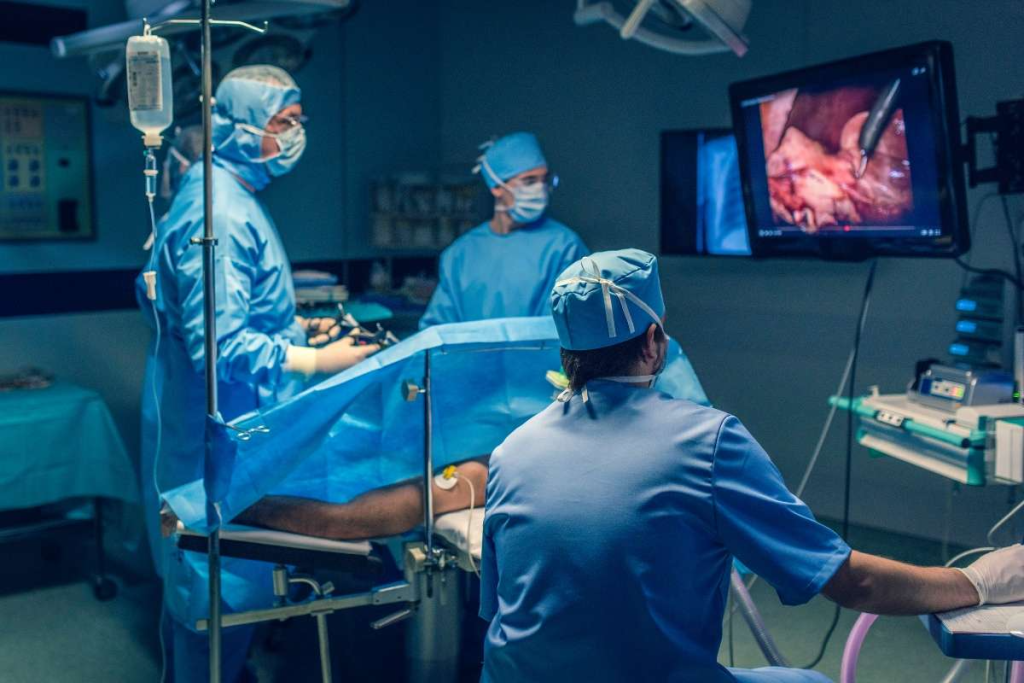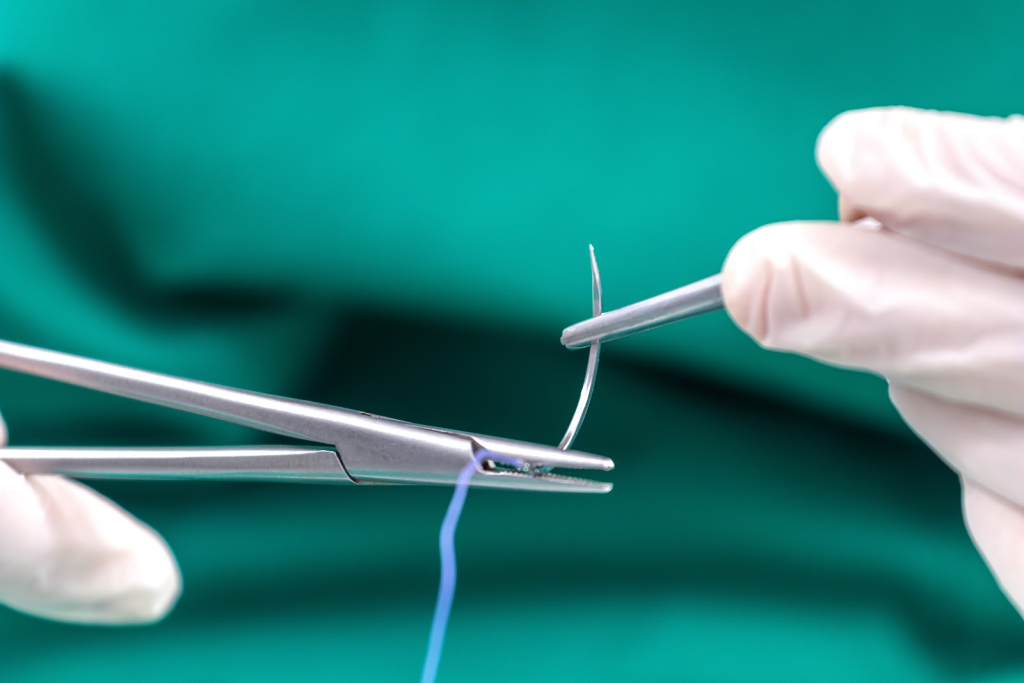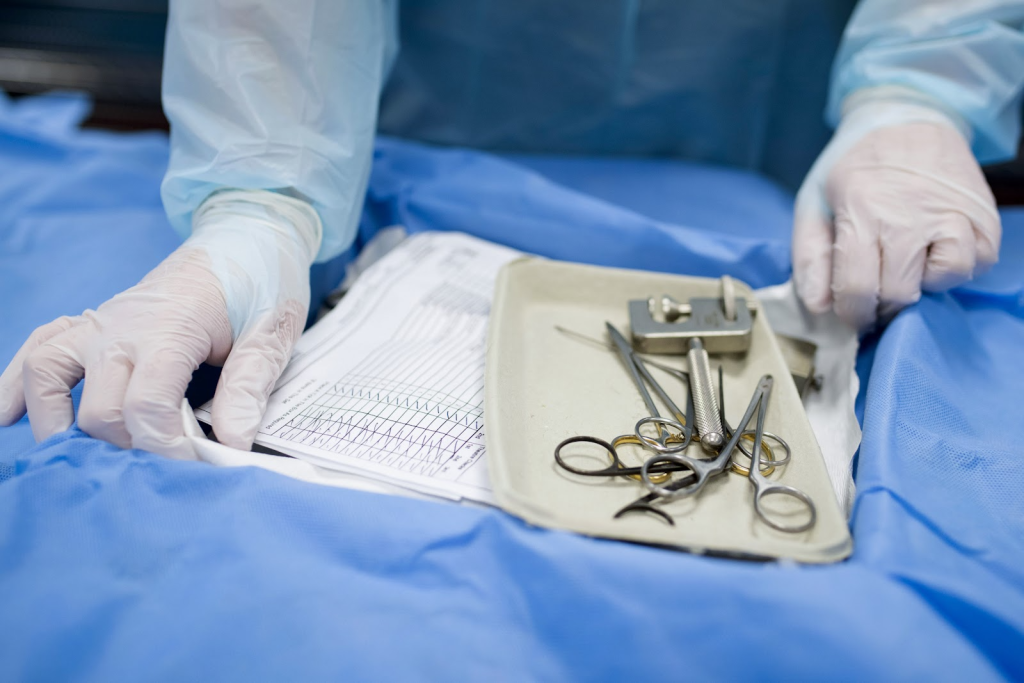Last Updated on October 21, 2025 by mcelik

At LivHospital, we know that going through a surgical procedure can be scary. That’s why we focus on quick, top-notch care. Some surgeries are really fast, finishing in less than an hour.
Quick medical procedures include vasectomy, which takes 20“30 minutes. Cataract extraction can be done in 15“30 minutes per eye. And appendectomy usually takes under 60 minutes. Studies show these procedures are not only fast but also safe and effective for our patients.

Surgical techniques have evolved to be faster without sacrificing patient care. LivHospital uses the latest tech for quicker recoveries and fewer complications.
In today’s surgery, “quick” means fast procedures that keep care standards high. This includes new techniques and tools that cut down operation times. Minimally invasive surgeries are a big part of this, making recovery faster and scars smaller.
We see a “quick” surgery as one done with precision and advanced tech. It’s not about rushing, but about making the process better for the patient.
Shorter surgeries bring many benefits. They lower the risk of problems, reduce time under anesthesia, and speed up recovery. Less time under anesthesia is key, as it cuts down on risks related to it. Plus, less damage to tissues means fewer complications and a smoother recovery.
At our hospital, quicker surgeries mean shorter stays and quicker returns to daily life. This boosts patient happiness and makes our healthcare more efficient.
We offer vasectomy as a quick procedure done in 20-30 minutes. It’s a simple way for men to prevent pregnancy. It works by cutting or blocking the vas deferens, stopping sperm from getting into the semen.
The vasectomy procedure is fast and easy. Here’s what happens:
We make sure our patients are comfortable and know what’s happening. We aim for a smooth and quick process.

After the vasectomy, you’ll need little time to rest. Most men can get back to their usual activities in a few days. The success rate for vasectomy is very high, making it a trusted choice for permanent birth control.
We check in with our patients to help with their recovery. With a high success rate and few complications, vasectomy is a top pick for male sterilization.
Modern cataract surgery techniques have made operations much quicker. Now, they can last just 15-30 minutes per eye. At our institution, we use the latest technology to give our patients the best care.
Cataract extraction is a common procedure. It removes the cloudy lens and replaces it with an artificial one. This helps restore vision.
Phacoemulsification is a modern cataract surgery technique. It breaks up the cloudy lens with ultrasonic waves and then removes it. For more details on cataract surgery, risks, and costs, visit ZEISS Vision Care.
This method has made cataract extraction quicker and safer. It has also reduced recovery times for patients.
We use this technique as part of our standard practice. This ensures our patients get the latest advancements in medical technology.
The COVID-19 pandemic greatly affected cataract surgery volumes worldwide. Many elective surgeries were postponed. This led to a backlog of cases.
Our institution adapted by implementing strict safety protocols. We also optimized our surgical workflow. This helped minimize delays and ensure care for our patients.
Emergency appendectomies are quick surgeries, usually done in less than an hour. At LivHospital, we focus on fast action for acute appendicitis. We use the most effective surgical methods available.
The choice between laparoscopic and open appendectomy depends on several factors. These include the severity of appendicitis and the patient’s specific conditions. Laparoscopic appendectomy, being less invasive, is often preferred for its faster recovery and lower risk of complications. Yet, in cases where the appendix has ruptured or there’s significant infection, an open appendectomy might be needed.
Laparoscopic methods are usually quicker, fitting our goal for efficient surgical care. Our experienced surgeons decide the best approach for each patient. They consider diagnostic findings and clinical judgment.
In our acute care settings, we follow strict efficiency protocols to reduce delays and improve surgical outcomes. This includes quick patient assessment and preparation, streamlined team coordination, and advanced surgical technologies.
By following these protocols, we ensure our patients get timely and high-quality care, even in urgent situations. Our focus on efficiency doesn’t lower the quality of care. Instead, it boosts our ability to deliver effective surgical interventions.
We use endoscopic procedures for fast and accurate diagnoses. These methods are both for finding problems and fixing them. At LivHospital, we use the latest technology for precise and effective treatments.
Colonoscopy is a quick procedure, usually done in 30 to 40 minutes. It checks the colon for polyps, cancer, and other issues. Our gastroenterologists use advanced methods to make it comfortable and accurate.
Efficient colonoscopy procedures help us find problems early. This improves patient results. The time needed can change based on the patient’s health and the findings.
Upper endoscopy is another key procedure we do quickly. It takes 15 to 30 minutes. A flexible tube with a camera is used to look at the esophagus, stomach, and small intestine’s start.
Our skilled team uses the latest tools for a detailed check. They can also do treatments during the procedure.
Endoscopic procedures can diagnose and treat. During a colonoscopy or upper endoscopy, we can remove polyps, stop bleeding, or widen narrow areas.
“The integration of diagnostic and therapeutic capabilities in endoscopic procedures represents a significant advancement in medical care, enhances patient comfort and outcomes.” – Expert in Gastroenterology
These quick and efficient procedures cut down on the need for many visits. They also reduce recovery time, helping patients get back to their lives faster.
Innovations in ophthalmology have made surgeries faster and more efficient. At LivHospital, we lead these advancements, giving our patients the newest eye care treatments. We always update our methods to give our patients the best results.
LASIK and PRK are top choices for quick vision correction. These surgeries are fast, with little recovery time. This means patients can quickly get back to their daily lives.
LASIK surgery is quick, taking less than 30 minutes per eye. The laser part is just a few seconds. PRK is another great option, though it might take a bit longer to recover. But it’s very accurate and effective.
“The advancements in LASIK and PRK have transformed the field of ophthalmology, providing patients with rapid and effective vision correction.” –
Expert Opinion
Glaucoma treatment has also improved a lot. Now, there are new, less invasive surgeries. These surgeries aim to lower eye pressure with fewer side effects and quicker healing.
At LivHospital, we use the latest tech for these precise surgeries. Our skilled surgeons work with patients to find the best treatment. They consider each patient’s unique situation.
Minimally invasive glaucoma surgery is simple and safe. It usually means a quicker recovery and can be done without an overnight stay.
Ophthalmology keeps leading in quick and effective surgeries. We’re dedicated to top-notch care, using the newest methods for the best results.
Recent studies, including a notable analysis in JAMA Surgery, have shown that gastroenterology is among the specialties that have made significant strides in optimizing surgery times. This development is key in modern healthcare, where efficiency and patient care are top priorities.
The 2022 JAMA Surgery analysis offers valuable insights into optimizing surgery times across various specialties. It shows that gastroenterology has made big strides in quick surgical procedures. By using evidence-based practices, surgeons in this field have cut down procedure times a lot.
At LivHospital, we aim to use this evidence to improve our surgical services. Our team of skilled surgeons follows modern protocols to ensure patients get timely and effective care. The study highlights that shorter surgery times are good for patient outcomes and make healthcare systems more efficient.
For more detailed information on the analysis, you can refer to the study published on PMC Journal.
Optimizing procedure times needs a multi-faceted approach, including modern surgical techniques and protocols. In gastroenterology, this means using advanced endoscopic procedures that are both diagnostic and therapeutic. By making these procedures more efficient, we can reduce the time patients spend in surgery, improving their experience and outcomes.
Our dedication to modern protocols is shown in our surgical practices. We keep updating our methods to match the latest advancements in the field. This ensures our patients get the most efficient and effective care possible.
Key strategies for optimizing procedure times include:
By focusing on these areas, we can keep improving our surgical services. This will help us provide high-quality care that meets our patients’ needs.
As we wrap up our look at the quickest surgical procedures, it’s clear the future of surgery is all about being faster and more focused on the patient. At LivHospital, we’re all about top-notch healthcare. We offer full support and guidance to international patients.
We’re using the latest in surgical techniques and making our procedures better. Our goal is to set new standards in quick, effective surgery. We aim to give our patients the best care possible, with both speed and compassion.
We’re working hard to make surgeries quicker without sacrificing quality. This shows our commitment to giving patients the best experience and results. We’re leading the way in modern surgery, focusing on efficiency and care.
A “quick” surgical procedure is one that’s done fast but doesn’t cut corners. It uses the newest surgical methods.
A vasectomy usually takes 20-30 minutes.
Cataract surgery, like phacoemulsification, takes 15-30 minutes.
An appendectomy usually takes about 60 minutes. The exact time depends on the severity of the appendicitis and the surgery type.
Endoscopic procedures, like colonoscopy, are done in 40 minutes. They help diagnose and treat issues.
LASIK and PRK take a few minutes per eye. The whole process is usually done in 30 minutes.
Laparoscopic appendectomy is less invasive. It leads to quicker recovery times than open surgery, which has a bigger incision.
Shorter surgeries reduce risks and speed up recovery. They also improve patient outcomes.
Yes, there are risks with any surgery. But quick procedures aim to minimize these risks while keeping care quality high.
Modern techniques, like phacoemulsification and laparoscopy, make surgeries faster. They make care more efficient and better for patients.
Evidence-based practices are key to faster surgeries. They ensure procedures follow the latest research and guidelines, leading to better care.
Subscribe to our e-newsletter to stay informed about the latest innovations in the world of health and exclusive offers!
WhatsApp us